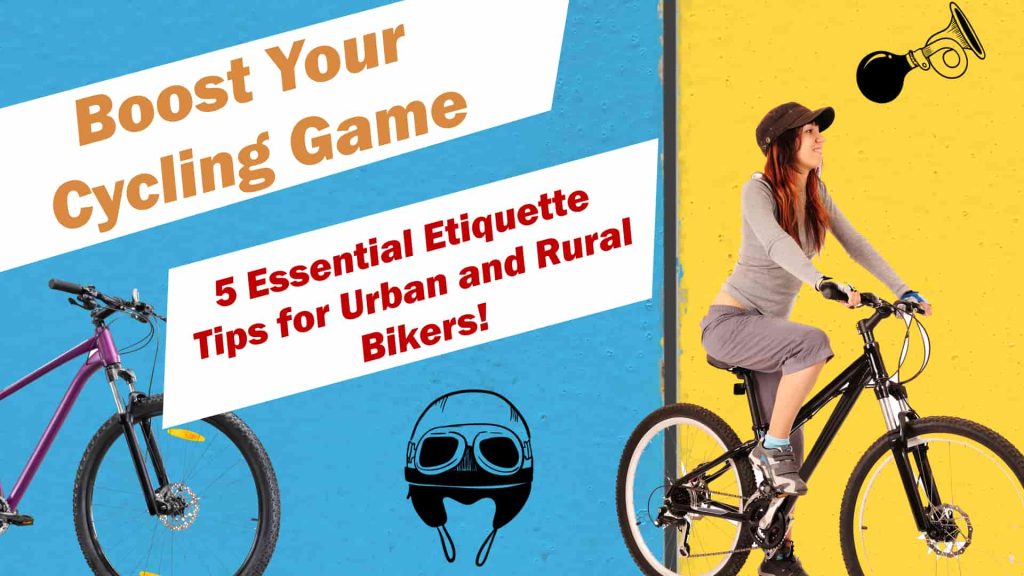
Germany is literally a pedal-powered paradise, a nation where the hum of 72 million bicycles blends into the daily symphony of life!
Here, almost every soul is matched with a two-wheeled companion, making it a true land of biking wonders. Imagine the streets of Münster, the crowned jewel of cycling cities, where bicycles outnumber people!
With 500,000 bikes cruising gracefully along and over 100,000 daily cyclists weaving their own urban tales, this city isn’t just bike-friendly; it’s bike-celebrated. Its sprawling network of dedicated paths not only connects destinations but also stories and lives.
As you strap on your helmet and adjust your mirrors, let’s revise through some basic biking etiquette that often goes forgotten.
With every turn of the pedal, respect and camaraderie become as crucial as the wheels that roll beneath you.
5 Biking Etiquette to Keep in Mind While Cycling in the City and Countryside
Germany is truly the land of sustainable transportation with a large population using bikes and cycles as the main means of transportation. Here are a few commonly known and less known biking etiquettes city dwellers have to be aware of when cycling in Germany.
Make sure to read: 5 Incredible Tips For Your Study Abroad in Germany to Make it a Transformative Experience!
#1 Obey Traffic Laws and Signals
As you glide through the bustling streets or serene pathways, remember that cycling isn’t just about pedaling and balancing; it’s about coexisting safely with all elements of traffic. Obeying traffic laws and signals is more than a legal obligation; it’s a commitment to your safety and that of others around you.
Urban jungles are often a complex maze of moving parts. Here, traffic signals and markings are the silent conductors orchestrating a safe passage for everyone. By adhering to these rules, you ensure a harmonious flow, prevent accidents, and preserve the joyous freedom that comes with cycling.
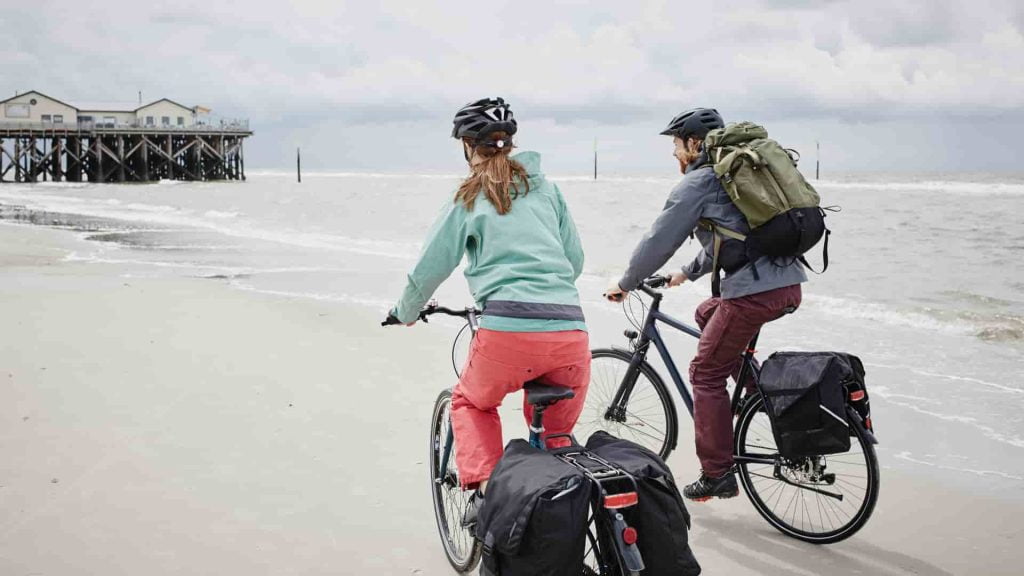
Understand and Respect Traffic Laws
- Right-of-Way: Just like any other vehicle, respect the right-of-way. Traffic from the right usually has priority, and this holds true at intersections and roundabouts. Even if you’re cruising in a bike lane, keep an eye out and yield to oncoming vehicles and pedestrians.
- Designated Lanes: Make the most of designated bike lanes, easily spotted with blue signs and a white bicycle symbol. These lanes are your safe harbor, but when you’re sharing paths with pedestrians, remember they have the right of way. Slow down, pass with care, and offer a friendly bell ring or verbal signal when overtaking.
- Signal Clearly: Communication is key! Use unmistakable hand signals to convey your next move. For a left turn, extend your left arm; for a right turn, raise your right arm, and for stopping, point downwards with your left arm. Even if your bike is equipped with lights, these manual signals are universally understood and can significantly reduce confusion and collisions.
- No Sidewalk Cycling (Adults): Sidewalks are a no-go zone for adult cyclists unless marked otherwise. Keep to the road, flowing with the traffic while sticking to the right side. Sidewalks are primarily for pedestrians, so respect their space and stick to your designated lanes. You can also look at specific trails and paths for two-wheelers.
#2 Signal and Communicate Intentions
Navigating through the city’s lively streets or country’s tranquil paths requires more than just physical agility; it demands clear communication. As a cyclist, your ability to signal intentions doesn’t just ease your journey; it actively prevents accidents and misunderstandings. Whether you’re turning, changing lanes, or preparing to stop, each signal you give is a dialogue with the drivers, pedestrians, and fellow cyclists around you.
In the bustling urban environment, where reactions need to be quick and clear, these signals are your primary tools of communication, ensuring a seamless flow amidst the diverse traffic.
Also remember, in every signal lies a commitment to mutual respect and safety. By mastering simple and common communication gestures, you become a proactive participant in the collective effort to keep our streets and paths safe and enjoyable.
Also read: You Won’t Believe How Germany’s Liability Insurance System Operates!
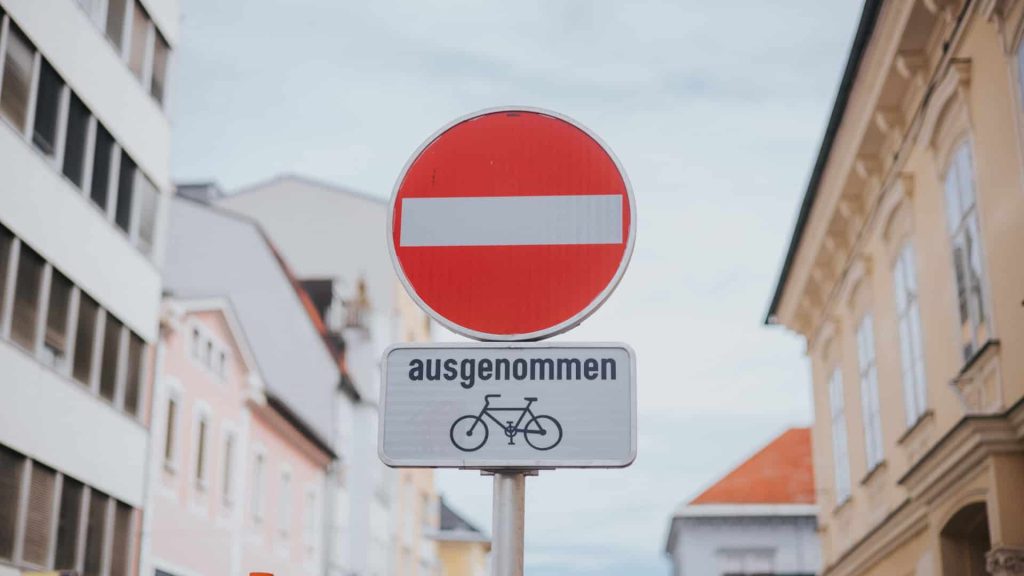
Mastering Common Biking Signals
- Left Turn: When you’re about to turn left, let your intentions be known by extending your left arm straight out to your side. Keep your arm parallel to the ground and your fingers pointing forward, creating a clear line that indicates the direction of your turn. Hold this position for a few seconds before executing your maneuver to ensure surrounding traffic has time to notice and react.
- Right Turn: To signal a right turn, raise your right arm so that your elbow is bent at a 90-degree angle, and your fingers point upwards. This upward point acts as a clear indicator of your intended rightward movement. As with all signals, maintain this position for a few seconds before you make your turn.
- Stop: Alert others of your intention to stop by extending your left arm downward, with your fingers pointing towards the ground. This downward signal is crucial for alerting those behind you, allowing them to adjust their speed accordingly. Keep your arm in this position until you’ve come to a full stop.
- Slow Down: To indicate that you’re reducing your speed, point your left arm downwards with an open palm facing back, mimicking a gentle wave. This signal is especially useful when approaching uncertain situations or when you’re about to decrease speed unexpectedly. It gives everyone an immediate visual cue to prepare for a change in your movement.
#3 Be Respectful of Shared Paths
As you pedal through the vibrant city parks or the serene countryside trails, remember that these paths are shared spaces, a common ground for pedestrians, cyclists, and sometimes even animals. Each twist and turn is a chance to demonstrate respect and consideration, ensuring that everyone’s experience is safe and enjoyable.
The etiquette of sharing is about more than just avoiding collisions; it’s about fostering an environment where all can move freely and joyfully. Whether you’re zipping through a bustling urban park or meandering down a quiet country trail, your behavior can set the tone for the entire path.
We think you’ll love this: From Student Visa to Permanent Residency in Germany: 5 Important Yet Overlooked Nitty-Gritties to Keep in Mind
Practices for Harmonious Path Sharing
- Stay Alert and Predictable: Always be aware of your surroundings and anticipate the actions of others. Avoid sudden movements or stops that might surprise those around you. Keep a consistent line and speed where possible, especially on busier paths.
- Speed Control: Moderate your speed to suit the environment. In crowded areas, slow down to navigate safely among pedestrians and other cyclists. On open trails, you can pick up the pace, but always be ready to reduce speed when encountering others.
- Passing Courtesy: When overtaking someone, always pass on the left and give a wide berth. A friendly bell ring or a polite “on your left” can alert others to your approach, reducing the risk of startling them. Ensure they’ve acknowledged you before you pass.
- Yielding When Necessary: Be prepared to yield to slower-moving pedestrians and other path users, particularly in congested or blind areas. Also, respect the right-of-way where signs or signals dictate. Remember, on shared paths, everyone has equal rights to the space.
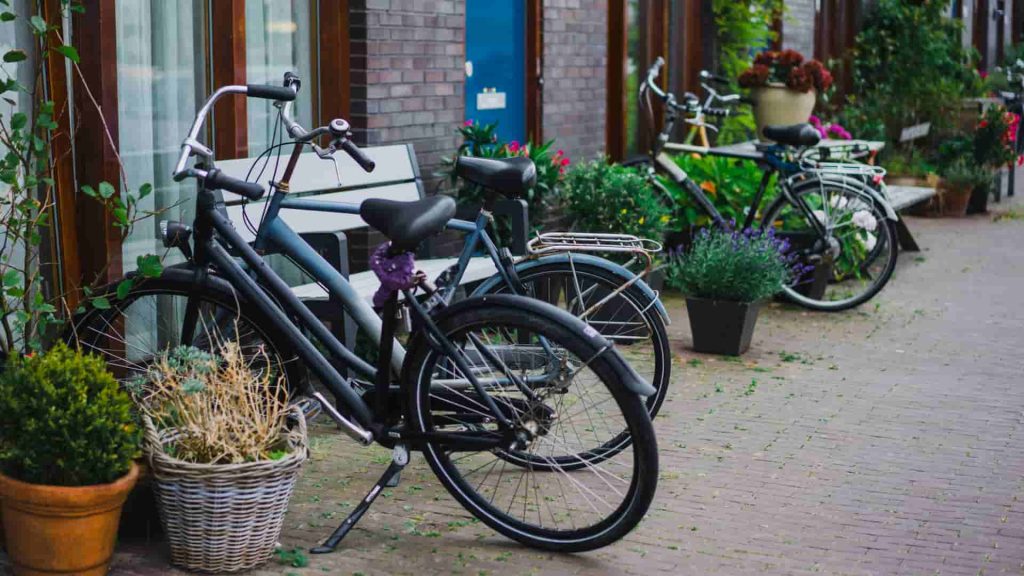
#4 Maintain Your Equipment
A well-tuned bike is the heartbeat of a smooth, safe cycling experience. Every component, from the slickness of the chain to the responsiveness of the brakes, plays a pivotal role in your journey.
Keeping your bike in prime condition is not just about prolonging its life; it’s about ensuring every ride is as safe and enjoyable as possible. A well-maintained bike responds better, goes faster, and lasts longer, significantly reducing the risk of accidents caused by equipment failure.
Don’t forget to read: Understanding the Nuances of Student Accommodation in Berlin
Regular Maintenance Tasks
- Brake Check: Regularly inspect your brakes for wear and tear. Ensure the pads are not worn down and that they firmly grip the wheel rim when applied. Listen for any unusual sounds that might indicate a need for adjustment or replacement.
- Tire Inspection: Keep your tires properly inflated according to the recommended pressure, and regularly check for signs of wear or damage. Properly inflated tires reduce the risk of flats and make your ride more efficient.
- Chain Care: Clean and lubricate your chain frequently to ensure a smooth ride. A well-maintained chain prevents unexpected slips and reduces wear on your gears and derailleurs.
- Light Up: Ensure your lights and reflectors are in good working order, especially if you’re riding in low light conditions or at night. Functional lights are crucial for visibility, allowing you to see and be seen by others.
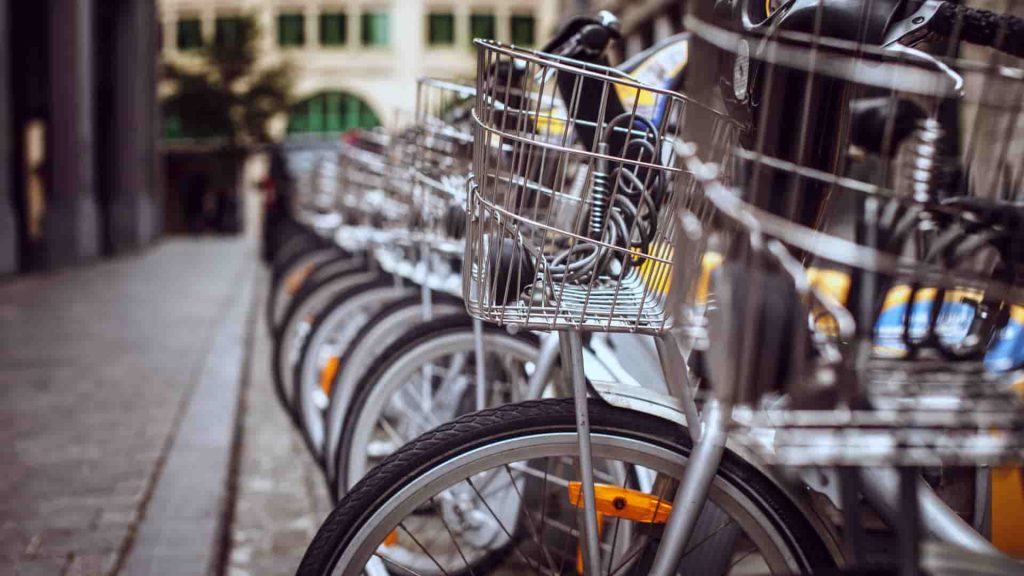
#5 Plan and Prepare for Different Environments
Cycling is a versatile activity that can take you from the heart of a bustling city to the tranquil expanse of the countryside. Each environment presents its unique challenges and joys, requiring a thoughtful approach to ensure a rewarding experience. Whether navigating through traffic or enjoying a scenic trail, being well-prepared is key to making the most of your ride.
Adapting to Environments
- Urban Versus Rural: Understand the difference between urban and rural cycling. Busy city streets demand constant vigilance and a more defensive riding style, while country roads might allow for a relaxed pace but require awareness of uneven surfaces and less predictable traffic.
- Appropriate Gear: Select gear suited to your environment. This includes choosing the right bike type, wearing suitable clothing for visibility in urban settings, and carrying necessary repair kits for longer, more isolated country rides.
- Route Planning: Before setting off, plan your route. Use maps and cycling apps to find the safest and most enjoyable paths. Consider factors like traffic density, road quality, and available amenities, especially for longer journeys.
- Weather Readiness: Check the weather forecast and be prepared for changes. Carry waterproof gear for rain, layers for cold, and sun protection for clear days. Adapting to weather conditions is crucial for comfort and safety.
Your recommended post for the week: Struggling to Make a Budget for Your Move to Germany? Here’s Our Detailed 7-Step Plan
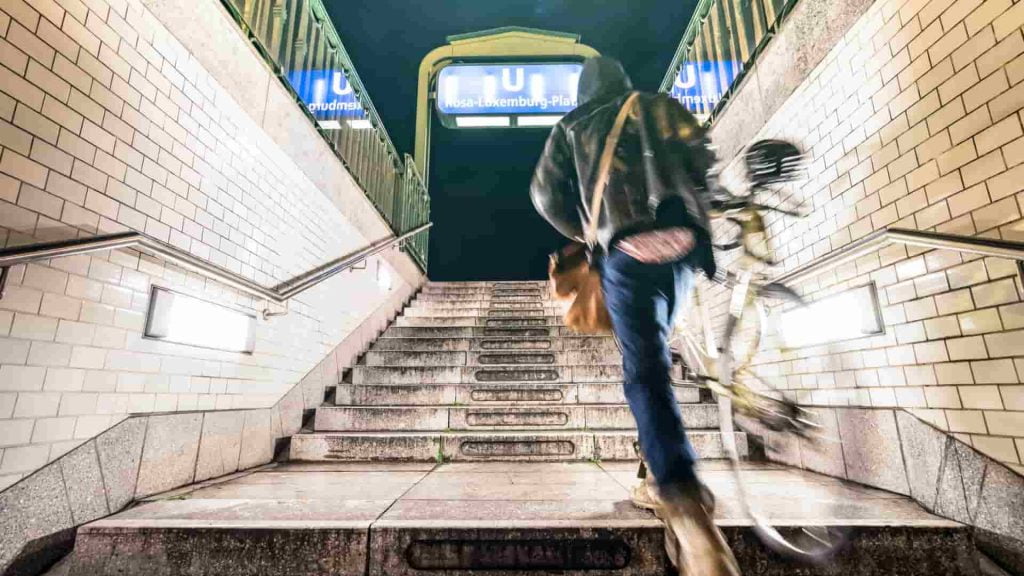
Biking Etiquette: A Journey from Memory Lanes to Monumental Rides
Let’s carry the spirit of safe and joyful riding into every pedal stroke.
Across Germany, ghost bikes stand as solemn sentinels, their white frames and floral tributes reminding us of the preciousness of life and the importance of sharing the road with care and respect.
Not to end this on a grave note…
The colossal creation of Didi Senft, with its towering 3.3-meter wheels, spins tales of human ingenuity and the boundless joy of cycling. These symbols, from the somber to the spectacular, reflect the diverse experiences of cyclists worldwide.
So, as you mount your trusty steed, whether it’s a sleek city bike or a rugged mountain rover, remember the lessons of the road, cherish the community you’re part of, and ride on with a heart as grand and spirited as the world’s largest bike!




